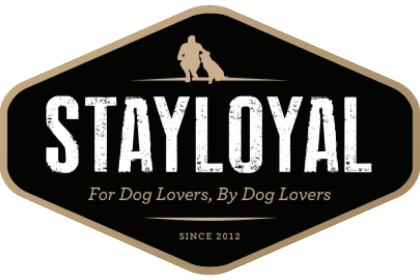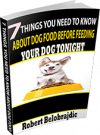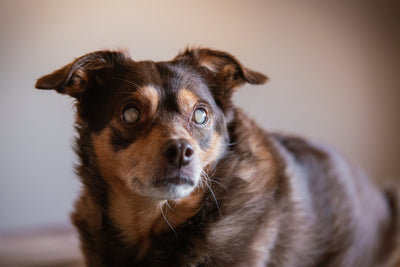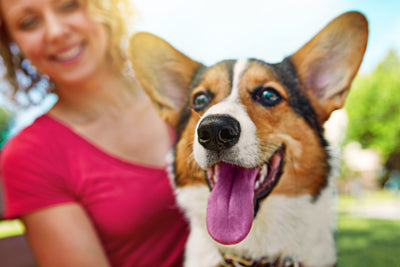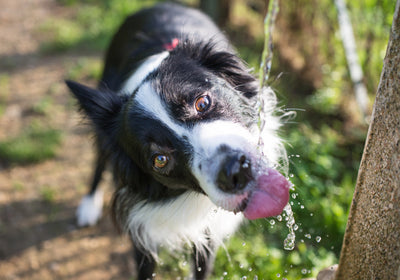What Bones Should You Give Your Dog?
|
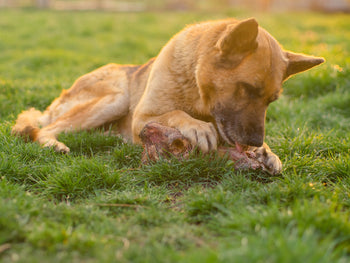
Raw meaty bones can give your dog a lot of great nutrients, satisfy his need to chew (so he doesn’t attack your shoes!), and clean his teeth. But you do need to make sure you are following the right steps to ensure the bones are safe for your dog.
Before Feeding Any Bones
If you haven’t fed your dog any raw bones before, here are a few “quick tips” to keep you and your dog safe
- Don’t ever feed cooked bones, the bones become brittle, making them more likely to splinter which can not only puncture your dog when he swallows them, but can also get stuck.
- Choose bones for your dog that are longer than her muzzle, to reduce the chance of choking.
- Monitor your dog to make sure she doesn’t choke, especially if it’s her first time eating a bone.
- Feeding the bone after a meal can help prevent your dog from trying to “wolf” it down as he is not “starving.”
- Don’t cut bones lengthwise – cut bones are more likely to splinter.
- Avoid bones with marrow for dogs with pancreatitis – the high fat contact can cause a flare up.
- Dogs that have had restorative dental work or have poor dental health should not be given bones unless cleared by the vet as it can cause their teeth to crack or break.
- Refrigerate all meaty bones and throw out any remaining ones after 3-4 days to reduce risk of bacteria.
- Bones get brittle if they are left out! So, don’t let your dog chew on a bone for days. A day or two at the most, as long as there is no meat left on it. If your dog doesn’t finish the meat, throw the bone out or put it back in the fridge, but remember they only last up to four days.
- Offer your dog raw bones on a surface that you can disinfect afterward – so the kitchen floor, outside on a cement or tile patio, etc. The lawn is my dogs preferred dining table.
- Remember to wash your hands after handling the bones.
Types of Bones
There are many, many bones you can feed your dog from a variety of animals. The main thing is to remember if your dog has any allergies – for example don’t give a dog allergic to beef a bone from a cow – and the size of your dog’s muzzle. A tiny Chihuahua can easily eat a lamb bone, which is probably too small for a Great Dane. After that, it’s really up to you and your dog’s preference. There are two types of bones across the different animal species with different properties that are good to be aware of when deciding what to feed your dog.
Long bones are found on wings and legs of animals and have a hard, smooth surface. They are filled with lots of marrow (so remember to avoid these for dogs suffering from pancreatitis or need a lower fat diet). For most dogs, marrow is a great supplement, however. It supports kidney and digestive function. It also helps generate red and white blood cells and even aid in healing wounds. The ends of long bones are soft and contain a lot of cartilage – which is a great natural source of glucosamine! Glucosamine is particularly important for senior dogs and fast growing, large breed puppies. (Avoid the large cow leg bones. Although I have come across a few dogs that can eat the entire bone. They are real hard and more likely to chip a tooth and if they can eat it, usually constipation follows as the bone compacts in the bowel. Lamb shanks are more appropriate for most dogs.)
Flat bones are bones such as ribs, spinal column, pelvis and shoulder. They are softer than long bones and have less marrow. Because they are softer, flat bones are definitely better for dogs with bad teeth (but again, check with your vet if you dog has poor dental health. Because while chewing on a bone can clean your dog’s teeth, if he has teeth that easily breaks, that is a concern.)
Both types of bones are full of calcium phosphate! Calcium phosphate can actually help your dog’s skeletal system to regenerate and adapt!! And, the type found in raw bones is four times more digestible versus a supplement. And, as mentioned, they are great for cleaning teeth! They act as a teeth scaler, removing excess tartar which will keep the teeth and gums healthy, freshen breath and help prevent cavities.
One thing you may come across more often with feeding raw meaty bones is regurgitation. The other day I gave one of my dogs a beef brisket bone that was a touch small and I knew she would try swallow it before chewing it properly. I watched carefully and she chewed, swallowed and regurgitated that brisket bone 3 times before she could swallow it. So, don’t freak out if your dog regurgitates their bones and chew them some more before swallowing it again, it’s just normal for them.
The most common species used for bones are cow, chicken, pork, lamb, turkey and kangaroo. Remember that the “type” Flat or Long, will affect how easily the bone is broken up by your dog. Chicken, turkey and pork bones do seem to splinter more easily than beef, bison or lamb, so that is something to keep in mind depending on how aggressive of a chewer your dog is and if you can monitor them while eating so you can take the bone away if a sharp edge presents itself. After that, your dog will let you know what “flavour” he likes best!
